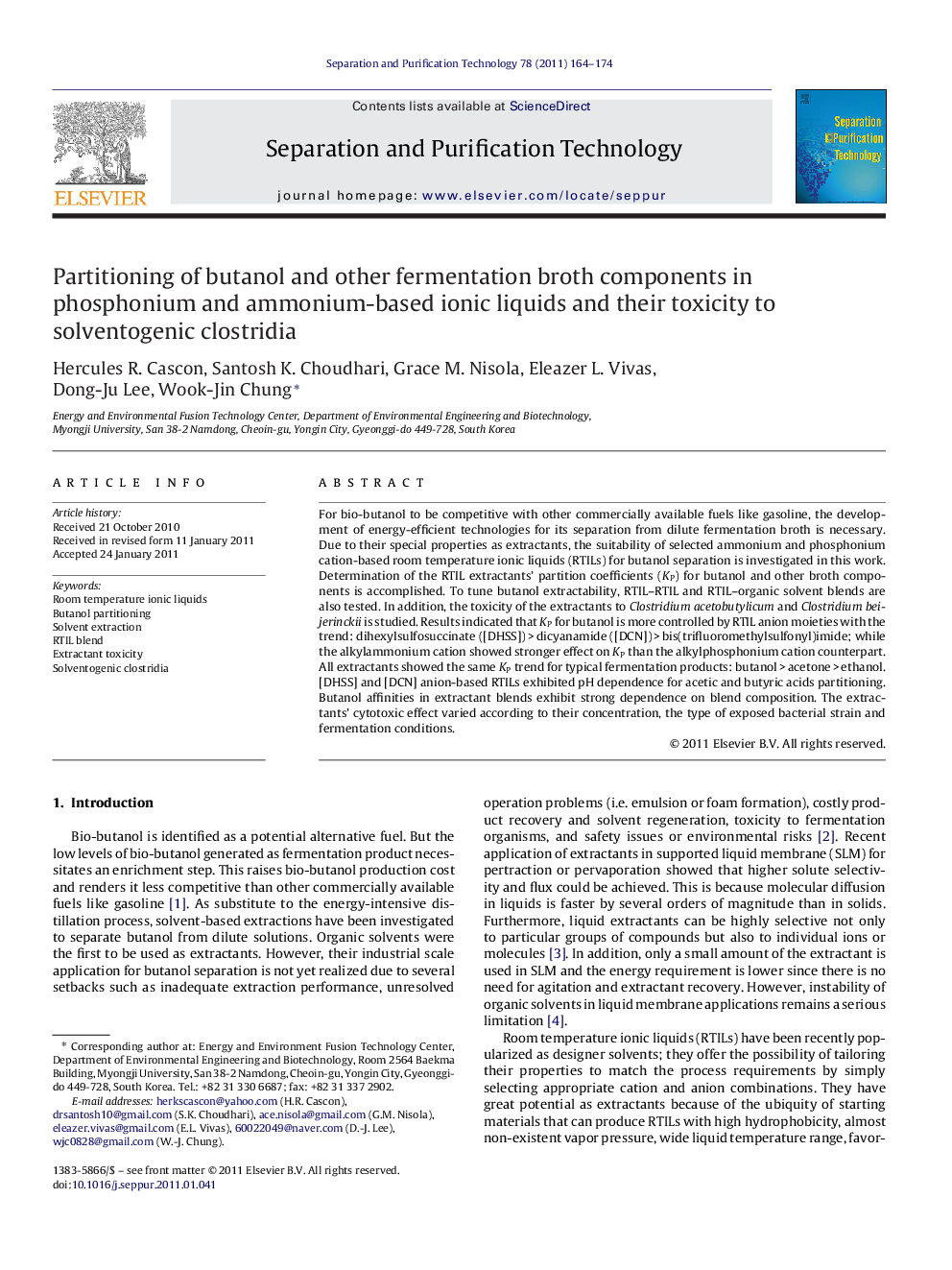| Article ID | Journal | Published Year | Pages | File Type |
|---|---|---|---|---|
| 642722 | Separation and Purification Technology | 2011 | 11 Pages |
For bio-butanol to be competitive with other commercially available fuels like gasoline, the development of energy-efficient technologies for its separation from dilute fermentation broth is necessary. Due to their special properties as extractants, the suitability of selected ammonium and phosphonium cation-based room temperature ionic liquids (RTILs) for butanol separation is investigated in this work. Determination of the RTIL extractants’ partition coefficients (KP) for butanol and other broth components is accomplished. To tune butanol extractability, RTIL–RTIL and RTIL–organic solvent blends are also tested. In addition, the toxicity of the extractants to Clostridium acetobutylicum and Clostridium beijerinckii is studied. Results indicated that KP for butanol is more controlled by RTIL anion moieties with the trend: dihexylsulfosuccinate ([DHSS]) > dicyanamide ([DCN]) > bis(trifluoromethylsulfonyl)imide; while the alkylammonium cation showed stronger effect on KP than the alkylphosphonium cation counterpart. All extractants showed the same KP trend for typical fermentation products: butanol > acetone > ethanol. [DHSS] and [DCN] anion-based RTILs exhibited pH dependence for acetic and butyric acids partitioning. Butanol affinities in extractant blends exhibit strong dependence on blend composition. The extractants’ cytotoxic effect varied according to their concentration, the type of exposed bacterial strain and fermentation conditions.
Graphical abstractFigure optionsDownload full-size imageDownload as PowerPoint slideResearch highlights► Selected phosphonium and ammonium-based RTILs studied as butanol extractants. ► Blending of RTIL extractants is a simple way to tune butanol partitioning. ► Some RTIL extractants can form hydrated complexes of organic acids at low pH. ► Most RTILs tested are toxic to C. acetobutylicum and C. beijerinckii. ► Toxicity factors: extractant type/concentration, exposed bacterial strain, agitation.
